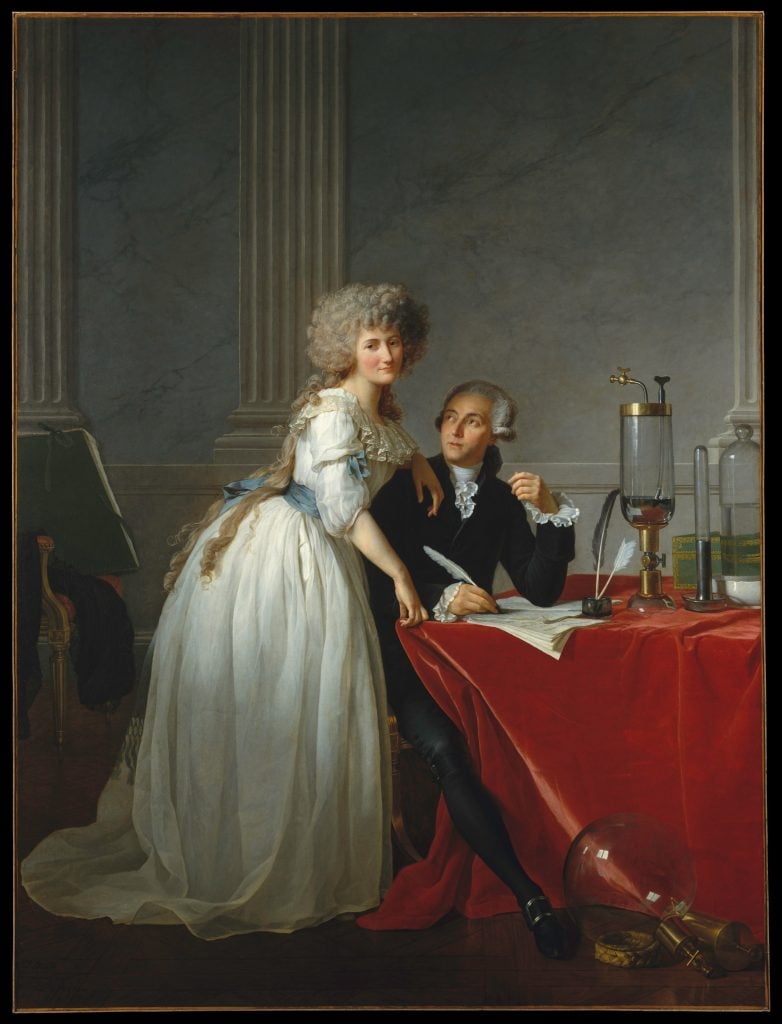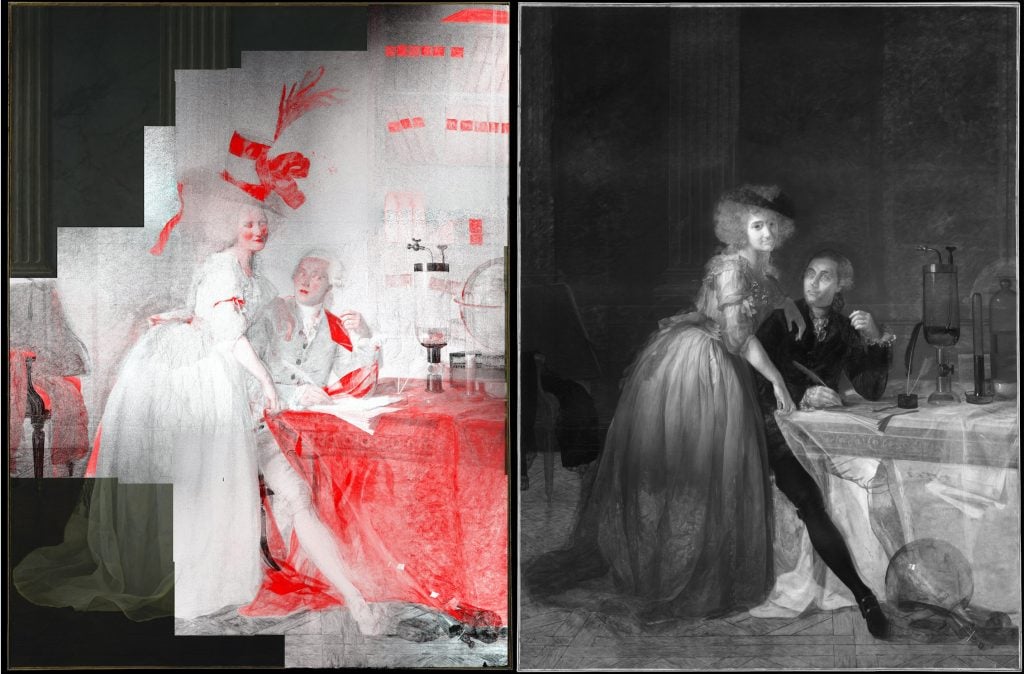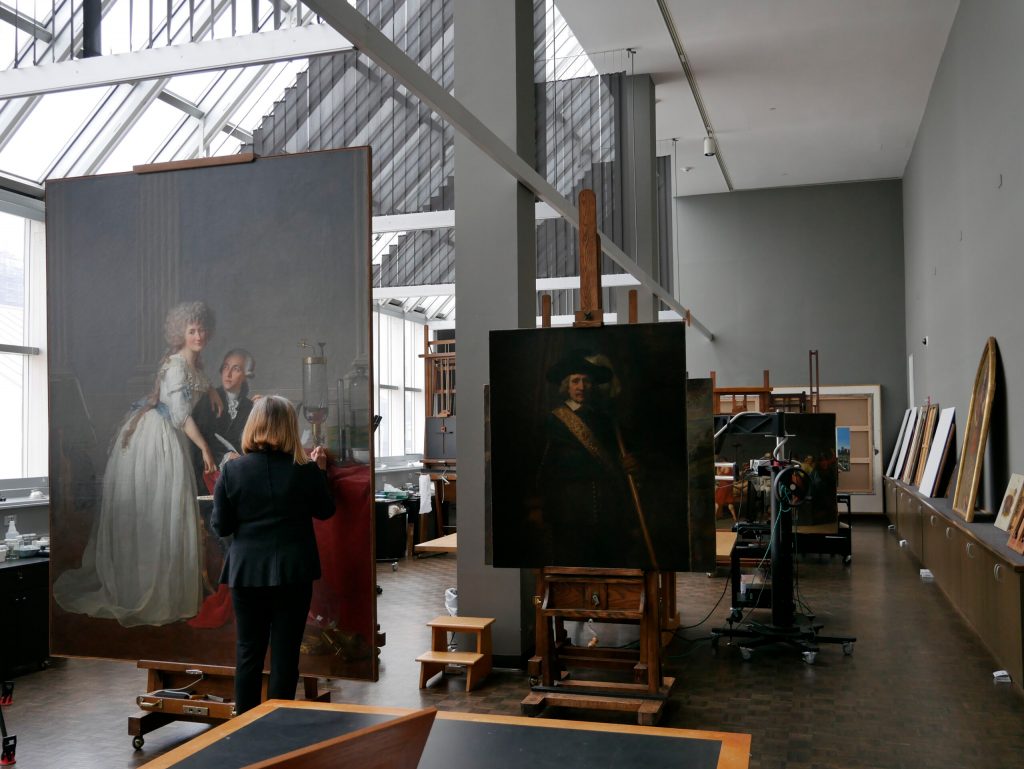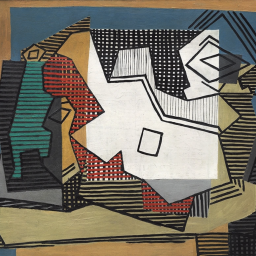In 2019, Jacques Louis David’s famed neoclassical portrait of chemist Antoine Laurent Lavoisier and his wife, Marie Anne, was sent to the Metropolitan Museum of Art’s conservation lab. The job was straightforward—the removal of a varnish. But in the process, researchers discovered something else, too: a hidden composition under the painting.
The painting we know depicts the Lavoisiers as assiduous leaders of a scientific revolution. A humbly attired Marie Anne leans over her husband, who is seated at a red-swathed table, hard at work before a bevy of specialized instruments.

Jacques Louis David, Antoine Laurent Lavoisier (1743–1794) and Marie Anne Lavoisier (Marie Anne Pierrette Paulze, 1758–1836) (1788). Courtesy of the Metropolitan Museum of Art.
But after months of analysis—via such techniques as infrared reflectography and macro X-ray fluorescence mapping—experts learned that David’s original painting of Lavoisier and his wife was far less flattering, depicting the couple as well-heeled members of the nobility, luxuriating in their lavish lifestyle. In the artist’s original sketch, the instruments are gone, the table is bare and inlaid with gilt brass details, and Marie Anne dons a swanky plumed hat.
The restored painting has now been returned to the Met’s neoclassical galleries. It looks like it always has, but its context has changed.
“The revelations about Jacques Louis David’s painting completely transform our understanding of the centuries-old masterpiece,” said Max Hollein, director of the Met, in a statement. “More than 40 years after the work first entered the museum’s collection, it is thrilling to gain new insights into the artist’s creative process and the painting’s evolution.”

Left: a map showing the combined elemental distribution of lead and mercury in David’s painting. Right: an infrared reflectogram of the canvas. Courtesy of the Metropolitan Museum of Art.
Born in 1743, Lavoisier was responsible for a number of major contributions to modern science, including the metric system, the first table of elements, and the discovery of oxygen and hydrogen. His wife, born in 1758, was instrumental to many of these innovations, often assisting Lavoisier with tests.
However, with his success, Lavoisier was also firmly entrenched in France’s Ancien Régime, the dominant system of rule upended by the revolution in the last decade of the 18th century. During that period, he was arrested by for his complicity as a tax collector, and eventually executed via guillotine in May 1794.
David’s 6-by-9 foot portrait was completed in 1788, just prior to the revolution. The artist intended to debut the work at a salon in 1789 but, according to the Met, he was convinced to pull the fawning tribute at the last minute by royal authorities, who were alarmed by rising tensions pointing to the coming overthrow. The painting wasn’t seen by the public until a century later, at the Exposition Universelle of 1889.
Antoine Laurent Lavoisier (1743–1794) and Marie Anne Lavoisier (Marie Anne Pierrette Paulze, 1758–1836) was purchased for the Met in 1977 by philanthropists Charles and Jayne Wrightsman.









